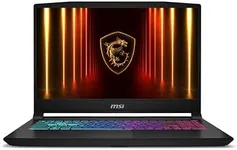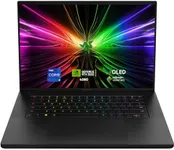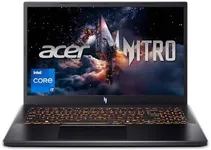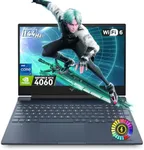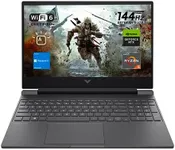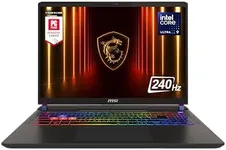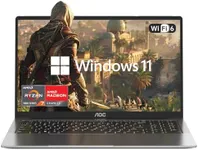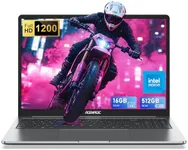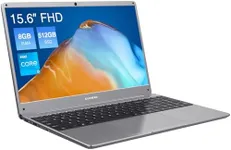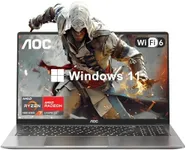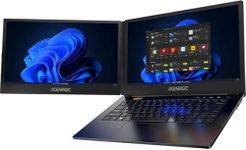Buying Guide for the Best Gaming Laptops For Kids
Choosing a gaming laptop for kids can be a fun yet challenging task. It's important to find a balance between performance, durability, and ease of use. Kids may not need the most powerful machine, but they do need something that can handle their favorite games without lagging or crashing. Additionally, consider factors like portability, battery life, and safety features. Here are some key specifications to consider when selecting a gaming laptop for kids.Processor (CPU)The processor, or CPU, is the brain of the laptop and determines how fast and efficiently it can run games and other applications. For gaming laptops, a multi-core processor is ideal. Entry-level CPUs like Intel Core i3 or AMD Ryzen 3 are suitable for less demanding games, while mid-range CPUs like Intel Core i5 or AMD Ryzen 5 can handle more complex games. High-end CPUs like Intel Core i7 or AMD Ryzen 7 are best for the latest and most demanding games. For kids, a mid-range CPU is usually sufficient, providing a good balance between performance and cost.
Graphics Card (GPU)The graphics card, or GPU, is crucial for rendering images and videos, making it essential for gaming. Integrated GPUs are found in lower-end laptops and are suitable for basic games. Dedicated GPUs, like those from NVIDIA or AMD, offer better performance for more demanding games. Entry-level dedicated GPUs can handle most kids' games, while mid-range GPUs are better for more graphically intensive games. High-end GPUs are typically unnecessary for kids unless they are playing the latest AAA titles. Choose a laptop with at least an entry-level dedicated GPU for a smoother gaming experience.
RAMRAM, or Random Access Memory, affects how many tasks the laptop can handle simultaneously and how quickly it can switch between them. For gaming, 8GB of RAM is generally the minimum requirement, allowing for smooth gameplay and multitasking. 16GB of RAM is better for more demanding games and future-proofing the laptop. For kids, 8GB of RAM is usually sufficient, but if they play more demanding games or use the laptop for other tasks like schoolwork, 16GB might be a better choice.
StorageStorage determines how much space is available for games, applications, and files. There are two main types: HDD (Hard Disk Drive) and SSD (Solid State Drive). HDDs offer more storage at a lower cost but are slower. SSDs are faster and more reliable but can be more expensive. A combination of both, with an SSD for the operating system and frequently used games, and an HDD for additional storage, is ideal. For kids, a laptop with at least 256GB of SSD storage is recommended to ensure quick load times and enough space for their favorite games.
DisplayThe display affects the visual experience of gaming. Key factors include size, resolution, and refresh rate. A 15-inch display is a good balance between portability and screen size, while a 17-inch display offers a more immersive experience but is less portable. A resolution of 1920x1080 (Full HD) is standard and provides clear and sharp images. Higher resolutions like 4K offer better visuals but require more powerful hardware. A refresh rate of 60Hz is standard, but 120Hz or higher provides smoother gameplay. For kids, a 15-inch Full HD display with a 60Hz refresh rate is usually sufficient.
Battery LifeBattery life is important for portability and convenience, especially if the laptop will be used away from a power source. Gaming laptops typically have shorter battery life due to their powerful components. Look for a laptop with at least 5-6 hours of battery life for general use. Keep in mind that gaming will drain the battery faster. For kids, a laptop with decent battery life ensures they can use it for schoolwork and entertainment without constantly needing to recharge.
DurabilityDurability is crucial for a laptop that will be used by kids. Look for a laptop with a sturdy build, reinforced corners, and a spill-resistant keyboard. Some laptops are designed to withstand drops and rough handling, which can be beneficial for younger users. A durable laptop will last longer and withstand the wear and tear of daily use by kids.
Parental ControlsParental controls are important for ensuring a safe and appropriate gaming experience for kids. Look for laptops that offer built-in parental control features or are compatible with parental control software. These controls can help manage screen time, restrict access to certain games or websites, and monitor online activity. Ensuring the laptop has robust parental controls can give parents peace of mind while their kids enjoy gaming.
